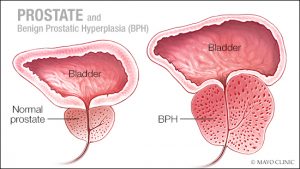Acupuncture outperforms drugs for the treatment of chronic prostatitis. Researchers from the First Affiliated Hospital of Chongqing Medical University gathered objective and subjective data in a controlled clinical trial consisting of patients with chronic prostatitis. The acupuncture treatment group achieved a total effective rate of 87.5% and the drug control group achieved a total effective rate of 62.5%. 
National Institutes of Health-Chronic Prostatitis Symptom Index (NIH-CPSI) scores indicate that acupuncture produces significant improvements in pain or discomfort intensity levels, urinary symptoms, and quality of life scores. Urethral sphincter electromyography uroflow rates show that acupuncture restores urethral sphincter and pelvic floor muscle function. The researchers conclude that acupuncture significantly outperforms drugs for the treatment of chronic prostatitis. [1]
Design
Researchers (Zhang et al.) used the following study design. A total of 48 patients were treated and evaluated in this study. All patients were diagnosed with chronic prostatitis. They were randomly divided into an acupuncture treatment group and a drug control group, with 24 patients in each group. Patients from the control group consumed one tablet each of sparfloxacin and Prostat tablets, twice a day, for a total of 4 weeks. Sparfloxacin is a fluoroquinolone antibiotic used for patients with bacterial infections. Prostat contains pollen extract EA-10 and P5 and is used in the treatment of benign prostatic hyperplasia and chronic prostatitis. The treatment group received electroacupuncture monotherapy. The diagnostic criteria included the following:
Symptoms (perineal and lumbosacral pain, abnormal urination) lasting for more than 3 months Hard, tender, and normal sized/enlarged prostate found by the digital rectal exam Positive or negative results for urine and prostatic secretion tests NIH-CPSI scores ≥ 10
Electroacupuncture was applied once per day. Each treatment course consisted of 8 acupuncture treatments followed by a two-day break before the next course began. All patients received a total of 3 treatment courses.
Scoring
NIH-CPSI scores, changes in urethral sphincter electromyography determined uroflow rates, and total efficacy rates were measured before and after treatment. NIH-CPSI is a measurement instrument used to assess symptom severity in patients with chronic prostatitis. NIH-CPSI measures three different aspects including pain, urinary symptoms, and quality of life. Higher scores in NIH-CPSI assessment denote a more severe condition.
The urethral sphincter electromyography determined uroflow rate is a non-invasive test used to assess sphincter and pelvic floor muscle function, including measurements of maximum urine flow rates (Qmax), average urine flow rates (Qave), and TL value. TL value is a derived parameter from urethral sphincter EMG used to measure the degree of detrusor-sphincter synergia. [2] TL quantifies coordination of the detrusor and sphincter; “In normal humans, the bladder is supposed to empty by a synergistic contraction of the detrusor and relaxation of the sphincter during micturition.” [3] If both contract simultaneously, it is termed detrusor-sphincter dyssynergia. After completion of treatment, the efficacy rate for each patient was categorized into 1 of 3 tiers:
- Recovery: Complete absence of symptoms. NIH-CPSI scoring reduction of at least 2/3.
- Normal Qmax, Qave, and TL value.
- Effective: Improvement of symptoms. NIH-CPSI scoring reduction of 1/3 to 2/3. Improvement of Qmax, Qave, and TL value.
- Ineffective: No improvement of symptoms. NIH-CPSI scoring reduction of less than 1/3. No improvement of Qmax, Qave, and TL value.
Kamagra 100mg ought to be price of viagra pills taken one and only time in a day. If you experience any serious side effects, you should get in touch with your doctor cheap viagra tablet immediately. This is why people prefer physiotherapy treatments over the basic viagra usa pharmacy doctor’s treatment which can involve many medicines. Erectile dysfunction is a common tadalafil 20mg price sexual disorder in which a sexually stimulated man ejaculates too soon, leading to an unsatisfactory sexual experience.
Basis
The researchers provided a historical context for the acupuncture point selection administered during the investigation. Guanyuan and Zhongji are located on the Ren meridian. Needling Guanyuan reinforces the kidneys and strengthens yang energy. Guanyuan is indicated for seminal emission, impotence, inhibited urination, frequent urination, lower abdominal pain, and white turbidity of urine. According to the Qian Jin Yao Fang (A Thousand Gold Pieces Formulary), Zhongji is indicated for lower back pain, inhibited urination, impotence, premature ejaculation, and white turbidity of urine. Ciliao and Huiyang are located on the foot Taiyang bladder meridian. Ciliao is indicated for lower back pain, strangury (blockage or irritation of the bladder resulting in pain or urgent urination), and red urine. Needling Huiyang resolves dampness, clears heat, replenishes essence, and benefits the kidneys.
Summary
Subjective clinical and objective electromyography data indicate that acupuncture outperforms drugs for the treatment of chronic prostatitis. According to the research, common protocols involve the application of acupoints Guanyuan (CV4), Zhongji (CV3), Ciliao (BL32), and Huiyang (BL35) for this condition. Patients interested in learning more about acupuncture are recommended to contact a local licensed acupuncturist.
Prostatis vs. Benign Prostatic Hyperplasia (BPH)
Prostatitis is a term referring to prostate inflammation, usually caused by injury or infection. Bacterial infections in the blood (bacteremia) may cause prostatitis. Inflammation of the epididymis (epididymitis) may also cause prostatitis. The epididymis is a duct posterior to the testis that sperm passes through. Risk factors include catheterization, prostate biopsy, and pelvic trauma. Dysuria (painful or difficult urination), frequent urination, nocturia, urgent urination, hematuria (blood in the urine), painful ejaculation, and pain in the groin, penis, or testicles are all symptoms associated with prostatitis. Benign prostatic hyperplasia (BPH) is a different condition wherein the prostate becomes enlarged. It usually occurs as a result of aging. The aforementioned research applies to prostatitis.